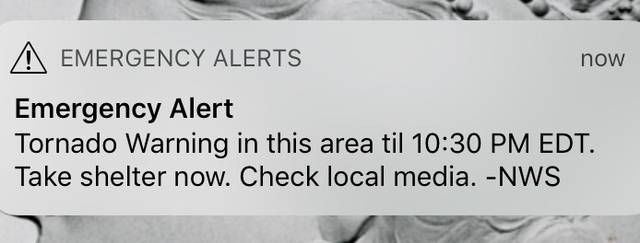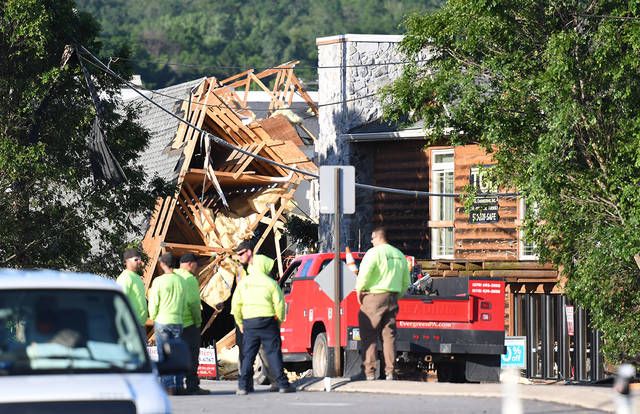An emergency text alert advising Wyoming Valley residents to “take shelter now” was sent at 9:55 p.m., or about five minutes before a tornado hit Wilkes-Barre Township on Wednesday night.
The National Weather Service strives to provide warning as soon as possible, but the average “lead time” for tornado warnings is only 13 minutes, said agency meteorologist Brian Tentinger, who is stationed at the Binghamton, N.Y, office that covers Luzerne County.
“A lot of times, the warning is shorter,” said Tentinger. “It’s just due to the fact that tornadoes are so hard to try to predict.”
Rick Smith, warning coordination meteorologist at the National Weather Service office in Norman, Okla., said warnings in his tornado-prone region have both exceeded and fallen short of the average, which he pegs at around 13 to 15 minutes.
“Even here in Oklahoma, we’ve had ones that happened with no warning. Usually, they’re the weaker kind of tornado,” Smith said.
Every minute counts
Minutes can be ample for people familiar with tornadoes, particularly if they’re at home with an emergency plan, he said.
“But if you’re not expecting it, ready for it or accustomed to it, every minute counts,” Smith said.
The ideal goal would be getting inside a sturdy structure, preferably in a basement, away from windows, said Tentinger, who grew up with regular tornado warnings in Iowa.
“You don’t want to be outside. Stuff gets blown around, even if you’re at a distance,” he said.
If you’re stuck in a car with no buildings in sight, it’s still probably better than being outside, Tentinger said, advising against pulling a vehicle under a highway overpass.
Riding out a tornado in a car is probably the “trickiest spot,” said Smith. If it can’t be avoided, he advises drivers to put the vehicle in park, leave the engine running, secure all seat belts and make sure occupants cover their heads and stay down as much as possible to avoid projectiles through the windows.
Some have bolted vehicles to take shelter in ditches or culverts, he said.
“People have survived and died doing all those things,” said Smith.
In a store
Shoppers stuck in a store, such as the ones hit in Wilkes-Barre Township, should seek the smallest room, such as a restroom, and drop as low as possible covering their heads, he said.
“You don’t want to be in a big, wide open store because wind or debris will break the glass and doors open, and once wind gets into a building, it can lift the ceiling up,” Smith said.
In his region, many homes are equipped with underground shelters. Smith has a steel vault under the garage at his residence.
The shelters are often stocked with radios, snacks, water and even bike and football helmets to protect heads from debris.
“It’s a part of life here. People are really tuned into it for the most part,” Smith said.
He advises Luzerne County residents to keep a tornado plan in mind, just as they would for other more common emergencies in Northeastern Pennsylvania, such as flooding and snowstorms.
For more on Wednesday’s tornado, click here.





